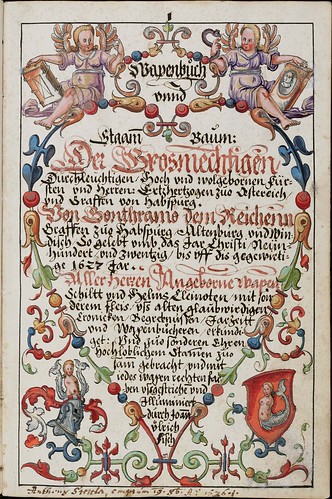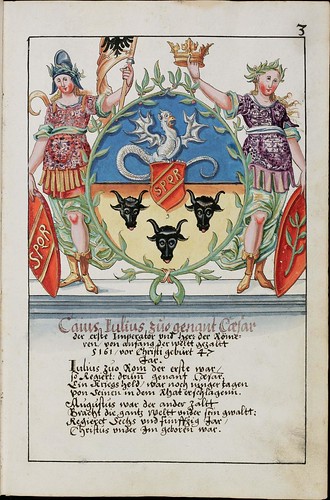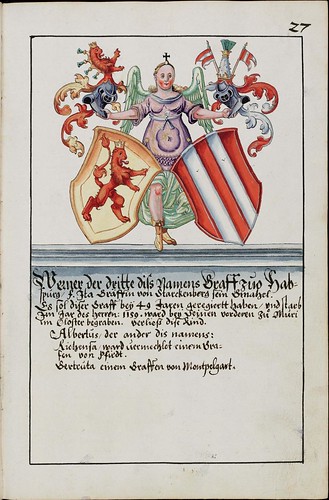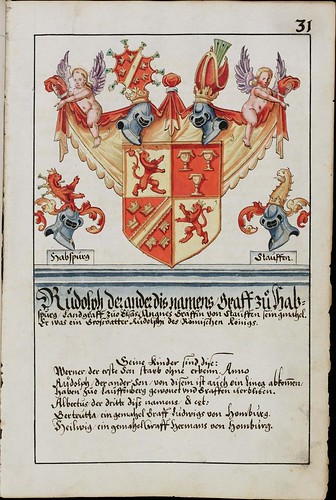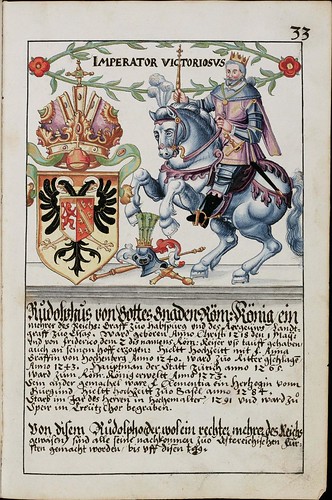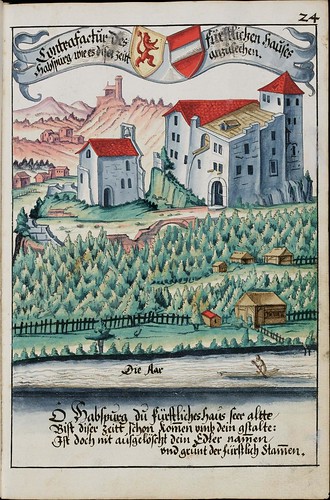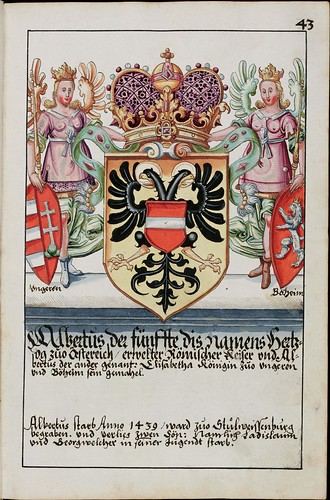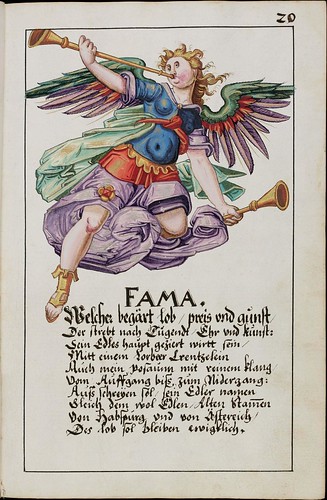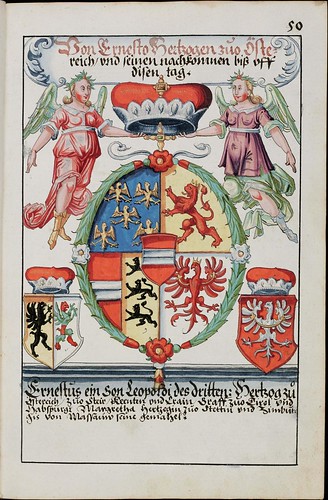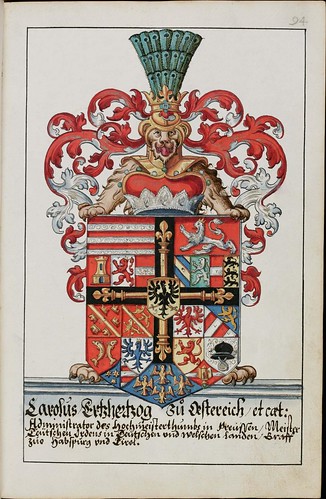
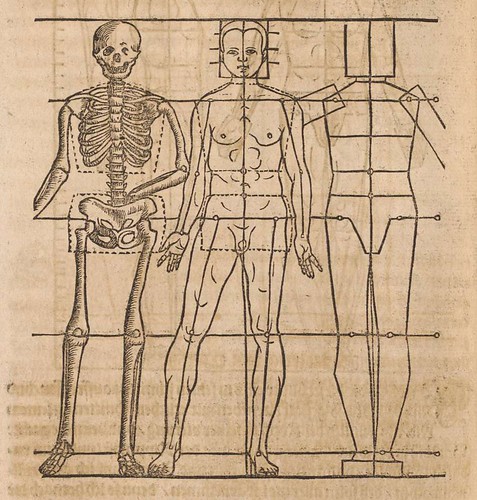
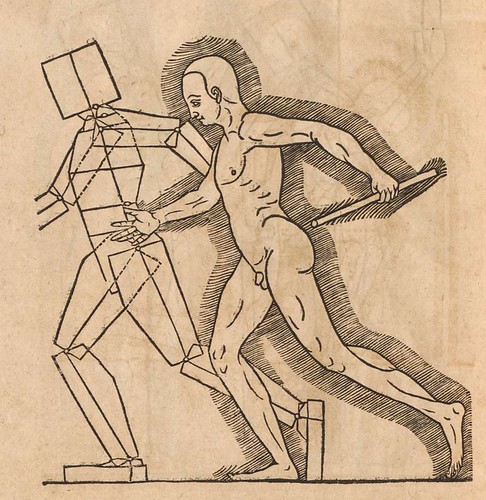
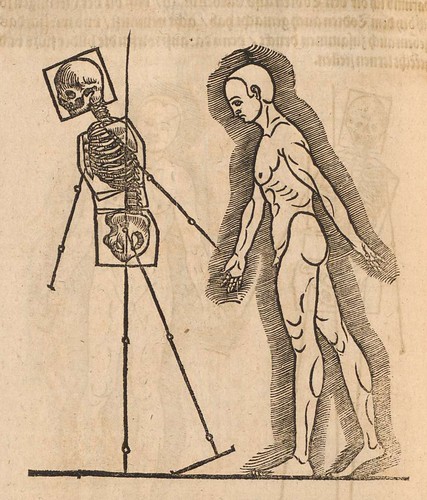
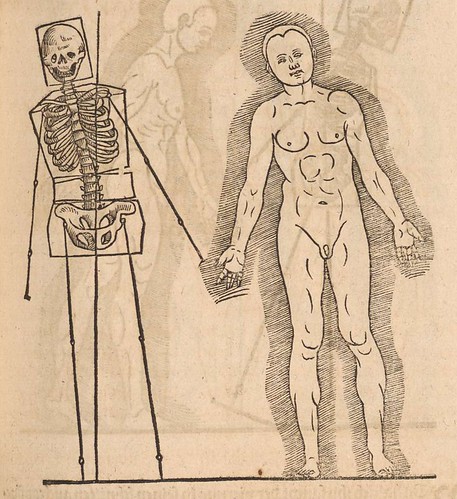
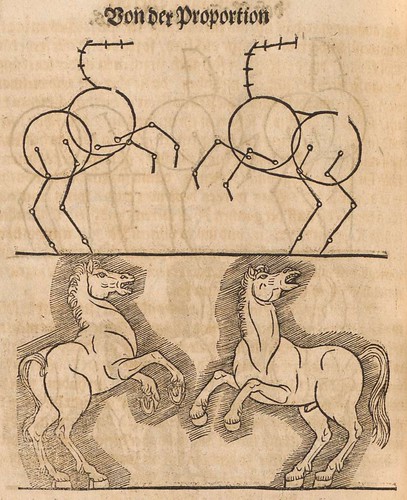

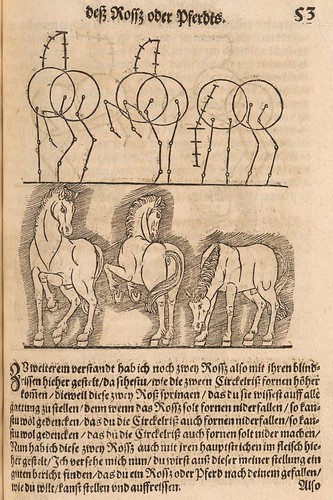




"First edition of this rare treatise on perspective and draughtsmanship, important for its use by artists, architects, and goldsmiths. The woodcuts are all the author's original work, though he was clearly influenced by Leonardo and Dürer.
The text begins with elements of linear geometry, and moves towards more detailed presentations of two-dimensional figures and the construction of stereometrical bodies. The third part, on human proportion, owes much to Dürer's 'Vier Bucher von Menschlicher Proportion' (1525); this section also includes woodcuts illustrating the proper proportions of a horse.
Lautensack's discussion of perspective is accompanied by illustrations of basic geometrical forms, ending with a fine folding plate depicting the Emperor's Hall in the Römer, Frankfurt's city hall and the site of the coronation of the Holy Roman Emperors. An early imprint from the famous Feyerabend publishing dynasty, the author's preface indicates that the printing of this work began on July 26, 1563.
[Heinrich] Lautensack (1522-68), an artist, goldsmith, and woodblock-cutter, lived in Frankfurt am Main. He was influenced by his father, Paul, and by his brother, Hans Sebald Beham*, both skilled painters and engravers. This book is extremely scarce; few copies have survived the constant use by the artists who utilized this work for their profession." [source]
This bookseller quote (repeated at various sites) in relation to Lautensack's 1564 treatise on artistic perspective,
'Des Circkels und Richtscheyts, auch der Perspectiva und Proportion der Menscher', constitutes - as best I can tell - the major online commentary with regards Lautensack's life and career.
I have obviously lifted the above illustrations - relating to biological perspective - from the latter section of this (164pp) book. My attention was primarily drawn to the style of representation seen for example in the first image above in which the geometric shapes are substituted for the figure's body parts.
Much of Dürer's voluminous works on perspective are online (see links below) and I think I've skimmed through the bulk of the illustrations. As the quote above suggests, Lautensack had relied on Dürer as a source and indeed, quite a few of the illustration styles in Lautensack's work are very very similar, although not actually copied as far as I can tell.
But what I
didn't see in Dürer's work - and this is the part that intrigues me - is this removal of the underlying body parts and their replacement with block shapes. Schematics are overlaid on bodies frequently - the perspective lines - and occasionally geometric shapes are illustrated alone or in combination, but not really in a way as to suggest an underlying bodily form. They are just piles of blocks to a viewer's first glance although, no doubt, the detailed accompanying text would assign them greater meaning.
The reason I find this intriguing, which may turn out to be just another of my random musings with no basis in reality, is that when I see a woodcut like the first image above, I'm reminded of the brilliant
proto-surrealist work of Braccelli who took this body part-as-shape design to the extreme, substituting real world objects, like screws and plates and bandages, in addition to simple geometric shapes, for his 1624 album of paired fanciful figures,
'Bizzarie di Varie Figure' (linked below).
Did Lautensack's
'Perspectiva' from 1564 make it as far as Florence prior to 1624? Who knows? But it amuses me to think of Braccelli doodling at his kitchen table in a standard artistic reference book from his age and ultimately producing one of the most uniquely innovative suite of prints in the last five hundred years.
I'm not sure I want to know if I'm wrong. It's these kinds of imagined connections that make the continued quest for esoteric imagery
that much more enjoyable. So, let me down gently, if at all.
- The images above were obtained from a 1618 edition of Lautensack's 'Perspectiva', posted online by MDZ in the last week.
- The original 1564 edition of 'Perspectiva' is available from the Saxony State Library in Dresden - a site that is fantastic for its range and depth, but ultimately frustrating because anything above a thumbnail sized image employs the Zoomify flash system.
- Octavo Editions reproduces a rare volume combining the first two books of Dürer’s 'De Symmetria Partium in Rectis Formis Humanorum Corporum' (Books on the normal proportions of the parts of the human form) with 'Underweysung der Messung' (Instruction in measurement) [allow pop-ups and click on any of the pictures].
- Biblioteca de la Universidad Complutense de Madrid have a range of Dürer's books on perspective, presumably scanned from microfilm. (some are compilations, some foreign editions I believe)
- Octavo Editions has a complete copy of Giovanni Braccelli's 'Bizzarie di Varie Figure' [also at the Library of Congress]
- See misteraitch's posts at Giornale Nuovo: A Fine, Useful Booklet; Geometry & Perspective; Perspectiva; Perspectiva Literaria; Anatomy, Geometry.
- Lautensack produced the illustrations for 'Das Melem´sche Hausbuch' [trans.]
- The intriguing System for Universal Media Searching (SUMS) site on perspective has a veritable truck load of reading material (I've scanned the scholarly html books: detailed but readable) by Kim H Veltman.
- Google books have a restricted but nevertheless extensive amount of 'Picturing Machines 1400-1700 - How technical drawings shaped early engineering practice' - Ed. Wolfgang Lefèvre, 2004 - available (this is mostly just for my own future general reference, although Lautensack is briefly mentioned a couple of times).
- The full title of the first edition of Lautensack's book is: 'Deß Circkelß vnd Richtscheyts, auch der Perspectiva, vnd Proportion der Menschen vnd Rosse, kurtze, doch gründtliche vnderweisung, deß rechten gebrauchs Mit viel schönen Figuren, aller anfahenden Jugendt, vnnd andern liebhabern dieser Kunst, als Goldschmiden, Malern, Bildhauwern, Steinmetzen, Schreinern, [et]c. eigentlich fürgebildet, vormals im Truck nie gesehen, sonder jetzunder erstmals von neuwem an tag gegeben'; just showing that it was intended as an instruction manual for goldsmiths, artists, stonemasons, joiners etc.
